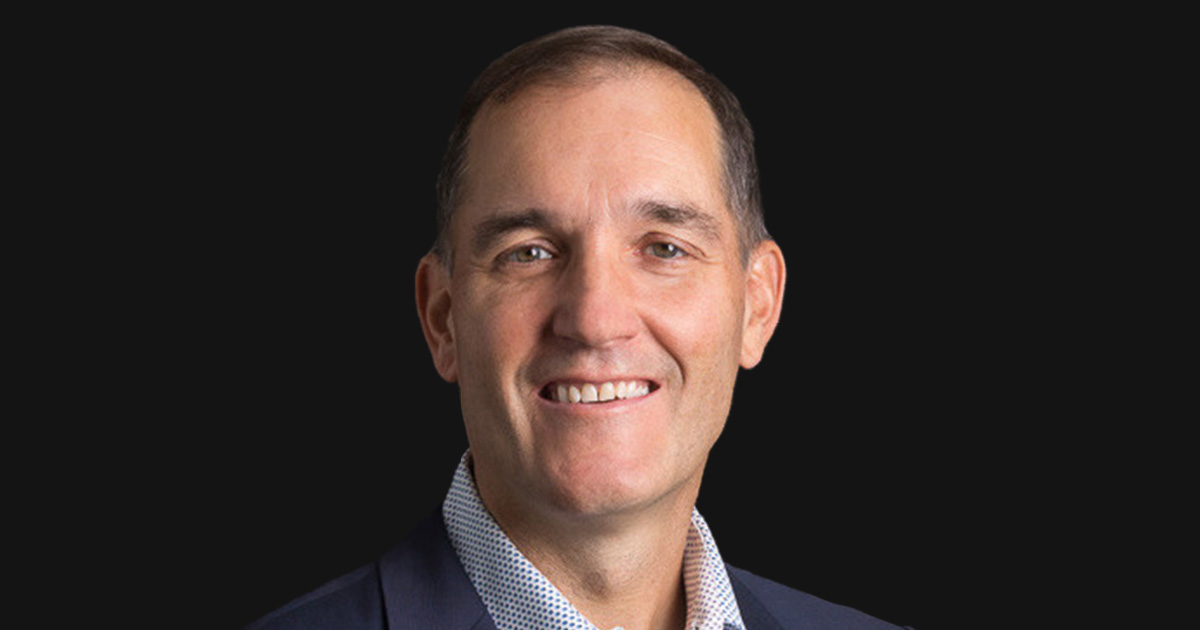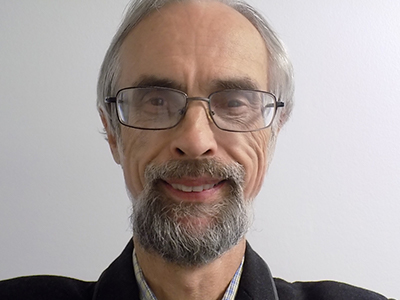Ross Dawson Shows You How to Thrive on Overload
Author Ross Dawson teaches leaders how to use five superpowers to surf the tidal wave of information: Purpose, Framing, Filtering, Attention, and Synthesis.

Ross Dawson Empowers Leaders to Experience Information Overwhelm as Blessed Abundance
Ross Dawson's new “Thriving on Overload: The 5 Powers for Success in a World of Exponential Information” is not a book you should simply read and pretend you'll actually change bad habits in dealing with the endless amount of information and data that hits everyone by the second.
In just the past decade, there has been more than a 50-fold increase of data to 64 zettabytes (64 with 21 zeros after it), which, he notes, if put into books stacked on top of each other, would stretch to the moon and back 300 million times. There are also over 500 billion webpages, and the average American consumes over 11 hours of media a day. Yet we still have ancient brains that will drown trying to drink from this fire hose of information.
"From that superabundance, we can expose ourselves to only a minuscule fraction," Dawson told Startup Savant. "Despite this, we subject ourselves to as much information as is humanly and physically possible, though I don't doubt we will find ways to push it further."
Alas, leaders have limited ability to process all this, so overload impacts the quality of their decisions. And Dawson notes that business management programs have not seriously addressed this effectively. His book is the ultimate guide to information mastery based on his decades-long experience as a futurist consulting for companies around the world, including Google, Procter & Gamble, Citibank, and Coca-Cola, but its lessons apply especially to any sole proprietor overwhelmed just keeping up with industry developments.
For it to be truly useful, however, it requires developing muscle memory and, like physical exercise, you might be sore initially. Hence, he repeatedly emphasizes that the best way the book should be absorbed is through accessible exercises.
Dawson advises first skimming it in 15–30 minutes, looking at section headers, diagrams, and "any immediately intriguing passages." He says he wrote it to be read from start to finish "at the pace that suits you, but dive first into any sections you feel might prove particularly useful for you and speed through the sections you don't find compelling." Then he advises those who take up his challenge to radically improve their skills in managing information to do exercises at the end of each chapter. If its 200 pages are not enough, he has "Resources for Thriving" at the end and provides further support at the Thriving on Overload website.
The Powers of Purpose and Framing
Mastering information has to start with "why," the purpose of our consumption of it for the six areas of our lives we need to address: our identity (what we most want to achieve), expertise (a couple of domains in which we wish to specialize), ventures (how we apply our knowledge), society (the culture we live in), well-being (physical, emotional, spiritual, and financial health), and passions (which make life exciting).
"Purpose" is the shortest chapter that sets up the requirements for the application of the ideas in the longest, "Framing," which lays out the habits that are needed to manage the information to feed a life that will thrive in each area.
Some tips from his own experience and those of "information masters" he knows are easy to adopt, while others will require a lot of effort for some people. Visual frameworks are foundational to be able to recognize patterns to give information context, which becomes knowledge that can lead to action, he explains.
He cites Anders Ericsson, whose ideas were misinterpreted to lead to the notion that 10,000 hours of practice were needed to become a master in a particular domain. In “Peak,” Ericsson corrects this: "The main thing that sets experts apart from the rest of us is that their years of practice have changed the neural circuitry in their brains to produce highly specialized representations, which in turn make possible the incredible memory, pattern recognition, problem-solving, and other sorts of advanced abilities needed to excel in their particular specialties."
Dawson notes that many of the greatest geniuses, such as Da Vinci, Galileo, Darwin, Einstein, and Tesla, were highly visual thinkers. Seeing things in our minds improves learning.
Some approaches to developing visualization by framing are trees (fundamental knowledge in the trunk leads to details in the branches and leaves), networks (such as maps of related concepts), and systems (like index cards that reference each other or connected note-taking tools like Evernote or Notion).
Richard Branson, Warren Buffet, and Jeff Bezos, among many leaders, find that writing ideas down in forms from a diary to a speech helps them to clarify their understanding.
Dawson recommends a process to create a visual framework:
- Select a clear scope for your goals.
- Consider the central logic at the center of the framework.
- Brainstorm all the possible elements.
- Rearrange elements, playing with where the core ideas should be.
- Create a narrative around their relationships.
- Develop the visual framework by sketching ideas in a layout and using software to create a design.
The Powers of Filtering and Attention
No matter how smart and educated we may be, our conscious mind can only process about 40 to 200 bits of information per second while being assaulted by 11 million bits. It's vital to apply the right filters so that what we want to prioritize gets attention.
"But humans do not see the world as it is, with many inbuilt biases leading us to an incorrect understanding of what is around us," Dawson wrote. "Central to the distortions in which we process information are those that support our preconceptions. The most fundamental and insidious of these is confirmation bias, which leads us to perceive and give importance to information that supports our prior views and to ignore, downplay, or simply not see evidence that contradicts our opinions. Yet when actively filtering information, we should strive deliberately to seek out evidence that will improve our mental models and decisions."
While most people spend a lot of time checking the latest news, little of it will have relevance beyond the moment, and it is beneficial to unsubscribe or block incoming emails and messages that are not essential, he says. Minimize cell phone notifications (70% of Americans admit they check within five minutes of receiving one).
Information masters recommend spending more time on sources that have stood the test of more time, such as books, articles, and summaries of prior research. Dawson advises looking up footnotes and their footnotes to find out whether misinformation is being uncritically passed on. Put your attention on sources you have found reliable to do primary filtering while occasionally browsing alternative views for balance.
Dawson found that many masters he interviewed for the book recommended having about 20 experts they followed closely, which could include setting up Google News alerts for them or subscribing to topical newsletters.
Some utilize their time exercising to listen to podcasts or audiobooks, and most are big readers of actual books (some studies suggest that digital versions don't stick in the mind as well, but any reading helps, especially if we make notes of some kind).
"There are four primary outcomes of sharing insights," he added. "It hones your filtering skills, demonstrates your expertise, boosts visibility, and builds relationships."
There is no such thing as effective multitasking, according to neuroscience studies, but you can allocate your time with six types of attention modes:
Scanning. Unless you are a stockbroker, you probably don't need to constantly scan. Choose important portals and sources, assess the headlines, bookmark some things for later reading, and limit scanning so you can focus on assimilating valuable information.
Seeking. In addition to using Internet search engines, don't forget that libraries are full of books, and at least their catalogs are usually online. Be clear about what you want so you don't waste time wandering in the digital universe. Scan your sources broadly, then delve deep and quickly narrow to what you need for later assimilation.
Assimilating. Learn to do effective speed reading that allows you to really absorb key points, increasing your ability to expand your field of vision, moving on quickly from each fixed point, skimming and reading conclusions, and using a finger or pencil to keep up a consistent pace.
Deep-Diving. Carve out blocks of time (many recommend three hours) to get fully focused and put it on your calendar, so colleagues know not to disturb you. Create a space where you can be comfortable, turn off your phone, and don't look at email or social media notifications. You may want to listen to music or use noise-canceling headphones. Take refreshing breaks to walk around (even outside) or do breathing exercises.
Exploring. Humans have always been explorers. It has been shown that those who broaden their visual field are more likely to have more insights. Improve the chances for serendipity (fortunate discoveries) by following a fascination and searching for information in unusual places.
Regenerating. "Soft focus" can take place while strolling in nature, exercising, taking a bath, reading fiction, meditating, daydreaming, playing an instrument, and cooking a meal. Soft focus can lead to insights.
Thriving on Synthesis
Dawson says six elements support the ability to synthesize information and data:
- Be open to new ideas: With 95% of people rating themselves as more open-minded than average, there are relatively few willing to admit just how strongly biased they are. There are, he notes, proven ways to increase our openness: having cultural experiences results in eagerness for more.
- Cultivate creative connections: Having a diverse workplace provides stimulus for more creative thinking. Some business leaders incorporate games or even improvisational theater for more innovation.
- Practice integrative thinking: Studies have been made of encouraging paradoxical thinking (such as trying to improve products while saving money) and found that both in business and science, more innovation results.
- Defy the gatekeepers: Thomas Kuhn's classic “The Structure of Scientific Revolutions” showed that conventional wisdom in every field was always about two generations behind the pioneers, so aim for a different future.
- Make iterative decisions: Make smaller decisions that will yield more information to help you make the big ones.
- Make the case for the opposite: To offset overconfidence and consensus, someone should play the devil's advocate.
"Synthesis is about perceiving the entirety, comprehensively taking into account everything that is relevant," Dawson said. "One reason humans will always transcend machines in their ability to synthesize is that they can empathize and comprehend the implications for humans in the way algorithms never can. Seeing the whole is essential to understand what is possible and the paths that can lead there."
About the Author

Scott S. Smith has had over 2,000 articles and interviews published in nearly 200 media, including Los Angeles Magazine, American Airlines’ American Way, and Investor’s Business Daily. His interview subjects have included Bill Gates, Richard Branson, Meg Whitman, Reed Hastings, Howard Schultz, Larry Ellison, Kathy Ireland, and Quincy Jones.
Startup Resources
- Learn more about Startups
- Visit the TRUiC Business Name Generator
- Check out the TRUiC Logo Maker
- Read our Business Formation Services Review
- Find Startup Ideas
- Explore Business Resources
Form Your Startup
Ready to formally establish your startup? Click below to read our review of the best business formation services!
Best Business Formation Services